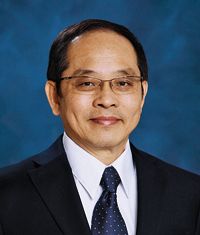The Evolution of UHPLC in Pharmaceutical Analysis
Michael Dong offers advice on using UHPLC for method development in pharmaceutical analysis and the important distinction between method conversion and method transfer.
Michael Dong offers advice on using ultrahigh-pressure liquid chromatography (UHPLC) for method development in pharmaceutical analysis and the important distinction between method conversion and method transfer.
Q. What impact has ultrahigh-pressure liquid chromatography (UHPLC) had on method development in pharmaceutical analysis?
A:
Ultrahigh-pressure liquid chromatography (UHPLC) coupled with short small-particle columns is quite ideal for rapid method development requiring rapid changes of mobile phase and operating conditions. The lower dwell volumes in UHPLC equipment are also suited for quicker column equilibration.
Q. You recently highlighted that there is some confusion between method conversion and method transfer. Can you elaborate on why the distinction is important?
A:
Method conversion or translation generally refers to the conversion of high performance liquid chromatography (HPLC) to UHPLC methods or vice versa via geometrical scaling. This can be accomplished between columns of different particle sizes and/or inner diameters and lengths by using particles with the same L/dp ratios and scaling method conditions such as flow rate, gradient time, and injection volume. This can be done by theoretical calculations or by software available from many vendors’ websites. Method transfer is a GMP activity used to confirm that a method developed and validated by the originating laboratory can be implemented accurately by another lab (transferee) This is driven by a protocol and a data report to ensure the results are comparable (equivalent) between the two labs.
Q. Do you have any general advice on adapting an existing HPLC method to a UHPLC method (and vice-versa)?
A:
Yes, first, one must pick columns with the exact bonded phase chemistry for more critical methods such as stability-indicating methods for drug substances or drug products. Second, use geometrical scaling either by theoretical calculations or via software. In many cases, additional “tweaking” may be required to separate some critical pairs.
Q. Is there anything you would say to someone developing a method using UHPLC the first time?
A:
I would strongly advise the use of a 3.0-mm i.d. column rather than a 2.1 mm i.d. column and to use columns packed with sub-3-μm rather than sub-2-μm particles. For new users, It is a big jump going from 4.6 mm i.d. columns packed with 3 or 5 μm materials directly to 2.1 mm i.d. column packed with sub-2-μm particles (much lower flow rates, smaller injection volumes, and more susceptibility to extracolumn bandbroadening). â¨The use of 3.0 mm columns packed with sub-3-μm (fully porous or superficially porous materials) is much more compatible to both UHPLC and HPLC equipment, and, in my view, more ”QC-friendly” because the pressure and operating conditions are more HPLC-like.
Q. What benefits does UHPLC offer pharmaceutical analysts involved in rapid column screening?
A:
Much shorter times. One can screen four to six columns with two mobile phases (A and B) in a few hours using fast broad gradients and get a quick idea of which bonded phases and mobile phases would work best for the sample and could be used for further method development.
Q. You have also used UHPLC in rapid mobile phase screening in pharmaceutical analysis. Can you tell us more about this approach?
A:
One must automate the system using switching valves for both the columns and the mobile phases. The screening can happen in the day, over night, or over the weekend. It is important to use columns with the same dimensions packed with “orthogonal” phases of different selectivity. This is only needed for more complex purity methods to separate the main drug from all process impurities and degradation products. The key is getting the right sample to screen with, which may not be always available. The inclusion of mass spectrometry (MS) in the screening system is also quite important for peak identification and troubleshooting, particularly for new samples.
Q. How do you see UHPLC evolving in the future?
A:
UHPLC is the modern standard platform in HPLC. In a few years, all HPLC will be some kind of UHPLC so the terminology may even go away. UHPLC will have higher pressure limits (the current leader is around 22,500 psi or 1550 bar), lower system dispersion, and lower dwell volumes. I hope that the new equipment would be less expensive and have a smaller footprint. More importantly, we need CDS (chromatography data systems) to be more user-friendly and easier to use and definitely, more compatible to MS data (displaying both ultraviolet [UV] and MS data for comparison).

Michael W. Dong
is a principal at MWD Consulting focusing on training and consulting services in HPLC, UHPLC, pharmaceutical analysis, and drug quality. He was formerly Senior Scientist at Genentech, Small Molecule Drug Analytical Chemistry and QC, Research Director at Synomics Pharma, Research Fellow at Purdue Pharma, and Senior Staff Scientist at Applied Biosystems/PerkinElmer. He holds a PhD in Analytical Chemistry from City University of New York, and a certificate in Biotechnology at University of California, Santa Cruz. He has more than 100 publications and a best-seller in chromatography.
RAFA 2024: Michel Suman Discusses Food Safety And Authenticity Research
November 28th 2024During RAFA 2024, Michel Suman of Barilla Spa and Catholic University Sacred Heart talked with us about his food safety and authenticity research, focusing on contaminants, adulterants, and authenticity markers in food processing.
RAFA 2024: Giorgia Purcaro on Multidimensional GC for Mineral Oil Hydrocarbon Analysis
November 27th 2024Giorgia Purcaro from the University of Liège was interviewed at RAFA 2024 by LCGC International on the benefits of modern multidimensional GC methods to analyze mineral oil aromatic hydrocarbons (MOAH) and mineral oil saturated hydrocarbons (MOSH).
In Conversation with the EAS Award Winner for Outstanding Achievements in Mass Spectrometry
November 27th 2024As part of our EAS 2024 coverage, we recently interviewed Benjamin Garcia of the Washington University in St. Louis about his work and his being awarded the EAS Award for Outstanding Achievements in Mass Spectrometry.